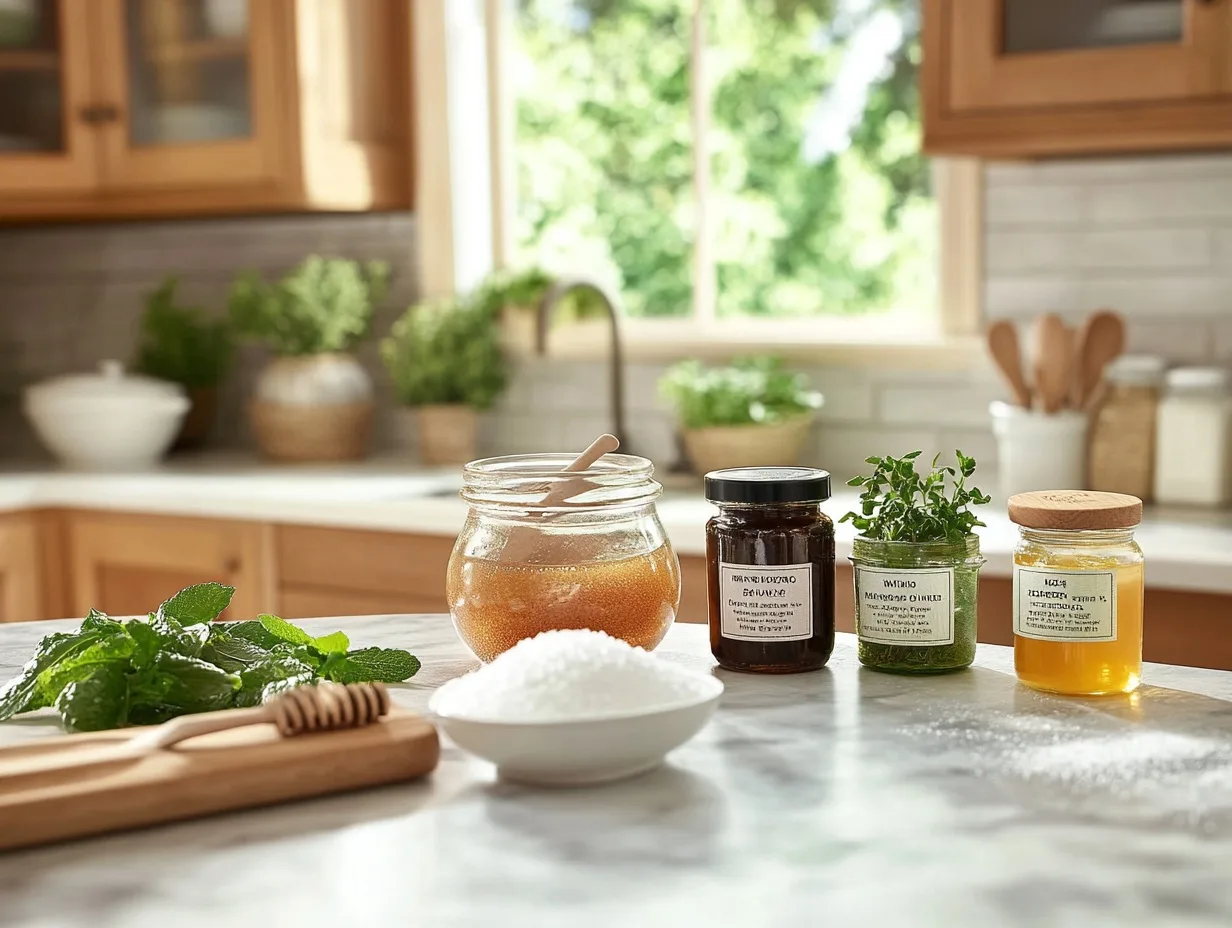Sweet Swaps You Need to Know
Sugar Alternatives for Diabetes can revolutionize how you manage your sweet cravings without enduring skyrocketing blood glucose levels. Traditional sugar (sucrose) offers quick bursts of energy, but it also escalates your risk of blood sugar spikes—one of the most critical concerns for individuals with diabetes. Fortunately, a variety of sweetener options exist that both satisfy your taste buds and support healthier glycemic control. This comprehensive guide explores top sugar substitutes, how they impact blood glucose, and practical ways to incorporate them into your daily diet. By rethinking how you sweeten beverages, baked goods, or snacks, you can enjoy desserts and treats while preserving balanced blood sugar levels.
Why Sugar Alternatives Matter for Diabetic Diets
Reining in Blood Glucose and Health Risks
Traditional white sugar or high-fructose corn syrup can stress the body’s insulin response, leading to:
-
Spikes and Crashes
- Rapid glucose elevation followed by intense hunger or fatigue.
-
Increased Risk of Complications
- Over time, persistently high blood sugar may contribute to vision problems, neuropathy, or cardiovascular disease.
-
Weight Management Struggles
- Excess sugar intake often correlates with surplus calorie consumption, complicating weight maintenance.
On the other hand, sugar alternatives for diabetes frequently possess lower glycemic indices or minimal net carbs, effectively diminishing the metabolic burden. As a result, you can indulge in subtle sweetness without jeopardizing your health goals.
The Role of Carb Counting and Low GI Choices
For many people with diabetes, carefully tracking carbohydrate intake remains fundamental to stable glucose control. Replacing refined sugar with alternative sweeteners lets you:
- Cut Empty Calories: Lower daily sugar can reduce unnecessary calories and promote healthier weight.
- Stabilize Energy: Choose sweeteners that release sugar more gradually or minimally impact blood glucose.
- Improve Dietary Quality: Freed from the chains of sugar-laden foods, you might embrace more fruits, proteins, and fiber.
Adopting a multifaceted approach—balancing carb counting, portion sizes, and nutrient-rich meals—fosters improved glycemic management. See our post on Smart Snacking for Diabetes for strategies that integrate sweeteners prudently.
Natural Sweeteners for Diabetes: Pros and Cons
Honey, Maple Syrup, and Molasses
Natural sweeteners like honey or maple syrup can offer trace nutrients or antioxidants, yet they’re still relatively high in carbs:
-
Honey
- Slightly lower GI than table sugar, plus antibacterial properties.
- Overindulgence could still raise blood sugar substantially.
-
Maple Syrup
- Richer mineral content, a distinct flavor for cooking or baking.
- Similar sugar content per tablespoon as white sugar, demanding careful usage.
-
Molasses
- Contains iron, calcium, and magnesium but is still calorie-dense.
While using these sweeteners occasionally might be acceptable, always measure precisely and consider your daily carbohydrate budget.
Fruit and Date Purees
Whole or pureed fruit introduces fiber, potentially flattening glucose spikes:
- Applesauce: Replaces sugar or oils in baking, providing natural sweetness.
- Mashed Bananas: A thickener and sweetener for pancakes or muffins.
- Dates or Date Puree: Chewy texture, ideal for no-bake bars or snack bites, though watch portion sizes due to concentrated fructose.
These fruit-based choices supply vitamins and antioxidants absent in refined sugar. However, they still contain fruit sugars, reinforcing the need for moderation.
Calorie-Free or Low-Calorie Sugar Alternatives
Stevia: Plant-Derived Sweetness
One of the most popular sugar alternatives for diabetes, stevia typically boasts zero or negligible calories:
-
Extraction from Leaves
- Derived from the stevia rebaudiana plant, recognized for intense sweetness.
-
Impact on Blood Glucose
- Shows minimal effect on glycemic levels, supporting stable insulin response.
-
Taste Profile
- Some detect a mild aftertaste—test smaller amounts to find your preference.
Monk Fruit: Natural, Low-Glycemic Sweetness
Monk fruit sweeteners, produced by extracting mogrosides from the fruit, present a potent sweet taste with no significant blood sugar elevation:
- Heat-Stable: Ideal for cooking, baking, or hot beverages.
- Flavor Nuances: Tends toward less bitterness than some sugar alcohols, though a slight aftertaste might persist.
- Usage: Often blended with erythritol to mimic sugar volume in recipes.
Sugar Alcohols: Erythritol and Xylitol
Though sugar alcohols offer minimal glycemic impact, each exhibits unique characteristics:
-
Erythritol
- Nearly zero net carbs, minimal GI side effects.
- May crystallize in baked goods, requiring careful recipe adjustments.
-
Xylitol
- More likely to cause digestive upset if overused, particularly in large amounts.
- Sweetness closely resembling cane sugar.
Tip: Some individuals experience gas or bloating with sugar alcohols, so adapt usage according to personal tolerance. The Academy of Nutrition and Dietetics details sugar alcohols’ potential effects on gut health.
Choosing the Right Sugar Substitute
Factors to Weigh When Selecting Sweeteners
Different cooking needs or taste preferences might drive your sweetener decisions. Evaluate:
-
Glycemic Impact
- Does the sweetener cause minimal insulin spikes, or do you need to account for moderate GI effects?
-
Baking Requirements
- Some sugar alternatives lose sweetness under heat or yield a less stable structure in baked desserts.
-
Taste Profile
- Zero-calorie sweeteners occasionally produce a lingering aftertaste. Aim to blend them with other flavor enhancers (e.g., vanilla, cinnamon).
Test-and-Adjust Method
When substituting sugar with new sweeteners, begin with smaller amounts:
- Start Low: Add half the recommended quantity, taste, and adjust.
- Combination Approach: Pair a calorie-free sweetener with a hint of honey or fruit puree for balanced sweetness and moisture.
- Monitor Blood Sugar: See how your body reacts; each sweetener’s effect can vary among individuals.
Incorporating Sugar Alternatives for Diabetes in Everyday Life
Modifying Existing Recipes
Adapting beloved family recipes often extends dietary compliance:
-
Cut Sugar by Half
- Many desserts remain delicious with significantly less refined sugar.
-
Blend Sweeteners
- Combine stevia with honey to achieve a more authentic taste, while limiting total sugar.
-
Increase Flavoring Agents
- Emphasize spices like cinnamon, nutmeg, or extracts to reduce reliance on sweetness alone.
Practical Baking Tips
Working with sugar alternatives might require a learning curve:
- Binders: Egg whites or mashed bananas can replicate sugar’s moisture-binding function in baked goods.
- Temperature: Some sweeteners (like stevia) degrade at high heat, so watch for recommended usage guides.
- Texture: Sugar influences browning and crispness, meaning sugar-free cookies or cakes might differ slightly from traditional versions.
To discover diabetic-friendly baked recipes harnessing sugar alternatives, consult the Diabetic Air Fryer Cookbook, where air-frying techniques produce crisp treats without refined sugar overload.
Mindful Snacking and Beverages
- Sweetened Tea or Coffee: Opt for a drop of stevia or monk fruit instead of spoonfuls of table sugar.
- Yogurt Parfaits: Layer plain yogurt with fruit puree or a small swirl of a zero-calorie sweetener.
- Protein Shakes: Use an unsweetened protein powder, then add sugar alcohols or stevia if needed.
Such thoughtful choices prevent hidden carbs from sneaking into your routine.
Potential Pitfalls of Sugar Alternatives
Taste and Aftertaste Issues
Adapting your palate to non-nutritive sweeteners or sugar alcohols can initially prompt complaints about bitter or metallic tangs. Over time, many individuals grow accustomed to these flavors or find synergy by blending sweeteners. Always remain open to experimentation until you strike the right balance.
Tolerance and Side Effects
Some sugar alcohols (e.g., sorbitol, maltitol) may cause bloating or diarrhea in high doses:
- Start Small: Evaluate tolerance carefully, especially in children or older adults.
- Read Labels: Ensure the sweetener or product doesn’t exceed recommended daily usage.
- Consider Blends: Combining a sugar alcohol with stevia or monk fruit can reduce GI distress.
Overconfidence in “Free” Foods
Non-caloric or low-carb sweeteners shouldn’t inspire unrestrained consumption:
- Still Track Carbs: Some items containing sugar alternatives remain high in net carbs from flours or other components.
- Maintain Balanced Diet: Even sugar-free treats can contribute to nutritional imbalances if they displace essential fiber or protein sources.
- Portion Control: Overindulging in sweet flavors can stoke cravings, complicating overall dietary adherence.
Sample Low-Sugar Recipe: Chocolate Coconut Bites
Why It Works: These easy, no-bake bites combine beneficial fats from coconut with unsweetened cocoa and a sugar alternative, making them suitable for stable glucose levels in moderation.
-
Main Ingredients
- 1 cup unsweetened shredded coconut
- 2 tablespoons unsweetened cocoa powder
- 2–3 tablespoons sugar alternative (e.g., erythritol)
- 2 tablespoons coconut oil (melted)
- Pinch of salt
-
Preparation
- Mix shredded coconut, cocoa, sweetener, and salt in a bowl.
- Add melted coconut oil, stirring until mixture clumps.
- Form small balls or flatten into disks.
- Refrigerate ~30 minutes to set.
-
Variations
- Swap coconut oil for a small amount of nut butter or add ground nuts for extra protein.
- Incorporate a few drops of mint or vanilla extract to diversify flavors.
Tip: Keep servings small—a bite or two often suffices as a sweet fix without spiking glucose. For additional dessert or snack ideas, see Diabetes-Friendly Desserts.
Integrating Sugar Alternatives for Diabetes into Everyday Routines
Grocery Shopping and Label Reading
To master Sugar Alternatives for Diabetes, develop label-savvy skills:
- Check Ingredient Lists: Avoid hidden syrups or hydrogenated oils that inflate calories or saturated fat.
- Compare Net Carbs: Subtract fiber and sugar alcohols from total carbs to assess net effect.
- Scrutinize Serving Sizes: Some sugar-free products remain high in carbs if consumed in bigger amounts.
Meal Prepping for Consistency
Preparing partial or entire meals in advance can safeguard you against sugar-laden temptations:
- Portion Snacks: Pre-measure cookies, bars, or no-bake bites into small baggies or containers.
- Freeze Extras: Extend shelf life of sugar-free baked goods or fruity purees.
- Use Routine: Scheduling sweet treats at specific times fosters better portion control.
Overcoming Sugar Cravings and Emotional Eating
Addressing Emotional Triggers
Cravings sometimes arise from stress or boredom rather than genuine hunger:
- Mindful Distractions: A short walk, journaling, or calling a friend can shift emotional focus.
- Balanced Macro Intake: Sufficient protein and fiber reduce sugar cravings by stabilizing hunger hormones.
- Therapy or Counseling: A mental health professional can help unpack deeper emotional ties to sweet foods.
Harnessing Savory Substitutes
When sugar cravings strike, occasionally pivot to savory options:
- Cheese and Veggie Snacks: Minimally processed cheese slices or crunchy cucumbers.
- Protein Smoothies: Infuse with nut butter for fullness if sweeteners fail to quell cravings.
- Air-Fried Chickpeas: Crisp, lightly salted to treat taste buds without sugar involvement.
Conclusion: Finding Your Perfect Low-Sugar Balance
Sugar Alternatives for Diabetes serve as powerful tools to satisfy your sweet tooth without disrupting your glucose management. By choosing natural or low-calorie sweeteners, pairing them with fiber and protein, and adhering to portion control, you transform desserts and snacks into guilt-free experiences. Regardless of whether you gravitate toward stevia, monk fruit, or sugar alcohols, a measured approach that respects your personal tolerance fosters steady, long-term success. Embrace small, incremental changes—testing recipes, monitoring blood sugar, and celebrating each balanced bite. Ultimately, sweet indulgences can remain part of a healthy lifestyle, complementing your broader quest for stable glucose, sustained energy, and ongoing enjoyment of food.


Leave a Reply